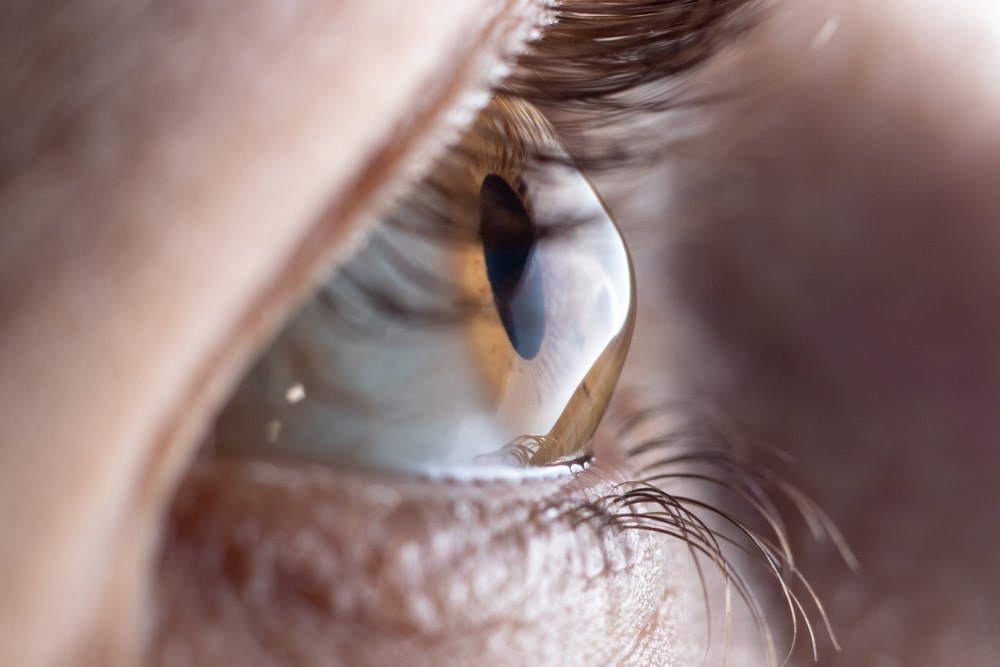
Corneal Cross Linking for Keratoconus
The Cornea Specialists at San Francisco Eye Institute are highly experienced in treating keratoconus and corneal ectasia. Our eye doctors are dedicated to caring for your eye health and improving your vision with personalized care and the most advanced treatment options. We are among the first eye care practices in the San Francisco Bay Area to offer the Glaukos iLinkTM system, which is the only FDA approved cross-linking device.
Book an AppointmentWhat is Keratoconus?
Keratoconus, sometimes called KC, is a progressive eye condition that affects the cornea. Your cornea is the clear outer layer of the eye that helps focus light. In patients with keratoconus, the cornea becomes thinner and weaker until it eventually changes from a round dome shape to a cone-shaped bulge, resulting in vision changes such as blurriness and distortion.1 Keratoconus typically develops in adolescence and worsens throughout young adulthood. While the exact cause of this disease is unknown, researchers have found some genetic associations and a strong link to environmental allergies.2
Keratoconus Symptoms
Keratoconus may affect one eye at first but usually progresses to both eyes. Typical symptoms include:
- Distorted vision
- Blurry vision
- Sensitivity to light
- Increased nearsightedness
- Symptoms can make day-to-day activities, such as driving or reading, difficult or impossible
- If left untreated, keratoconus can result in permanent vision loss.

What is Corneal Cross-Linking?
Cross-linking is a procedure designed to stop the progression of keratoconus or corneal ectasia (weakened corneas following refractive surgery). This minimally invasive treatment uses a combination of prescription eye drops along with UV light therapy to strengthen or stiffen the corneas. While there are several types of procedures billed as cross-linking, the only FDA approved cross-linking procedure is the iLink procedure performed with the Glaukos KXL device and specific eye drop formulations. The FDA-approved cross-linking treatment uses Photrexa® Viscous and Photrexa®, which are riboflavin enriched ophthalmic solutions.
Benefits of Corneal Cross-Linking
- Creates new corneal collagen cross-links
- Results in a shortening and thickening of the collagen fibrils
- Stiffens the cornea to help it maintain shape
Why Riboflavin?
Riboflavin, also called vitamin B2 is a critical nutrient for health. Found in a variety of foods, such as leafy greens, eggs, and nuts, riboflavin assists in red blood cell production and healthy growth. When used in a cross-linking procedure, riboflavin acts as a photo enhancing element to enable the cross-linking reaction that stiffens the cornea.
Is Cross-Linking Right for Me?
If you have been diagnosed with keratoconus or corneal ectasia, then you should discuss your treatment options with a board-certified ophthalmologist who is experienced in a variety of corneal procedures, including cross-linking. Ideal candidates for cross-linking are over the age of 14 and seeking a therapeutic option to limit the progression of keratoconus or corneal ectasia.

Corneal Cross-Linking: What to Expect
Before Your Procedure
The first step is a consultation appointment at our San Francisco office. Your eye doctor will examine your eyes, discuss your treatment options, and answer any questions to determine if this procedure is right for you. Our team will provide detailed pre-procedure guidelines.
During Your Procedure
iLink, or corneal cross-linking, is an outpatient procedure. First, we will apply anesthetic drops to numb your eyes. Then, a thin surface layer of the cornea called the epithelium will be removed. Photrexa Viscous eye drops will be applied for approximately 30 minutes and then additional Photrexa drops will be applied if needed. After 30 minutes, the Glaukos KXL device will be used to expose the corneas to UV light. A special contact lens bandage will be applied to your eye at the end of the procedure.
After Your Procedure
You should have a friend or family member drive you home after your procedure. You may experience some mild discomfort and light sensitivity. We will provide detailed post-procedure guidelines and schedule follow-up appointments. If your bandage contact falls off or if you experience severe pain or sudden vision changes, you should contact us right away.
Does insurance cover cross-linking?
Many insurance plans offer coverage for corneal cross-linking, and some insurance companies are currently increasing coverage for this FDA approved sight-saving procedure.
For more information on the FDA approved corneal cross-linking procedure for the treatment of keratoconus and corneal ectasia, visit www.LivingWithKeratoconus.com.
Contact San Francisco Eye Institute
Contact UsAt San Francisco Eye Institute, your vision is our top priority. Contact us if you have any questions about corneal cross-linking or to schedule your consultation appointment.
1 American Academy of Ophthalmologists. What is Keratoconus? Available: https://www.aao.org/eye-health/diseases/what-is-keratoconus. Accessed September 22, 2020.
2 U.S. National Library of Medicine. Keratoconus. Available: https://ghr.nlm.nih.gov/condition/keratoconus#genes Accessed September 22, 2020.
The doctors at San Francisco Eye Institute have either authored or reviewed and approved this content.
Ensuring the highest level of vision care and individual attention possible.
Whether you just need a general eye exam, or if you are interested in reducing or eliminating your need for glasses or contacts, our team is here to help! Contact us to book an appointment today!
